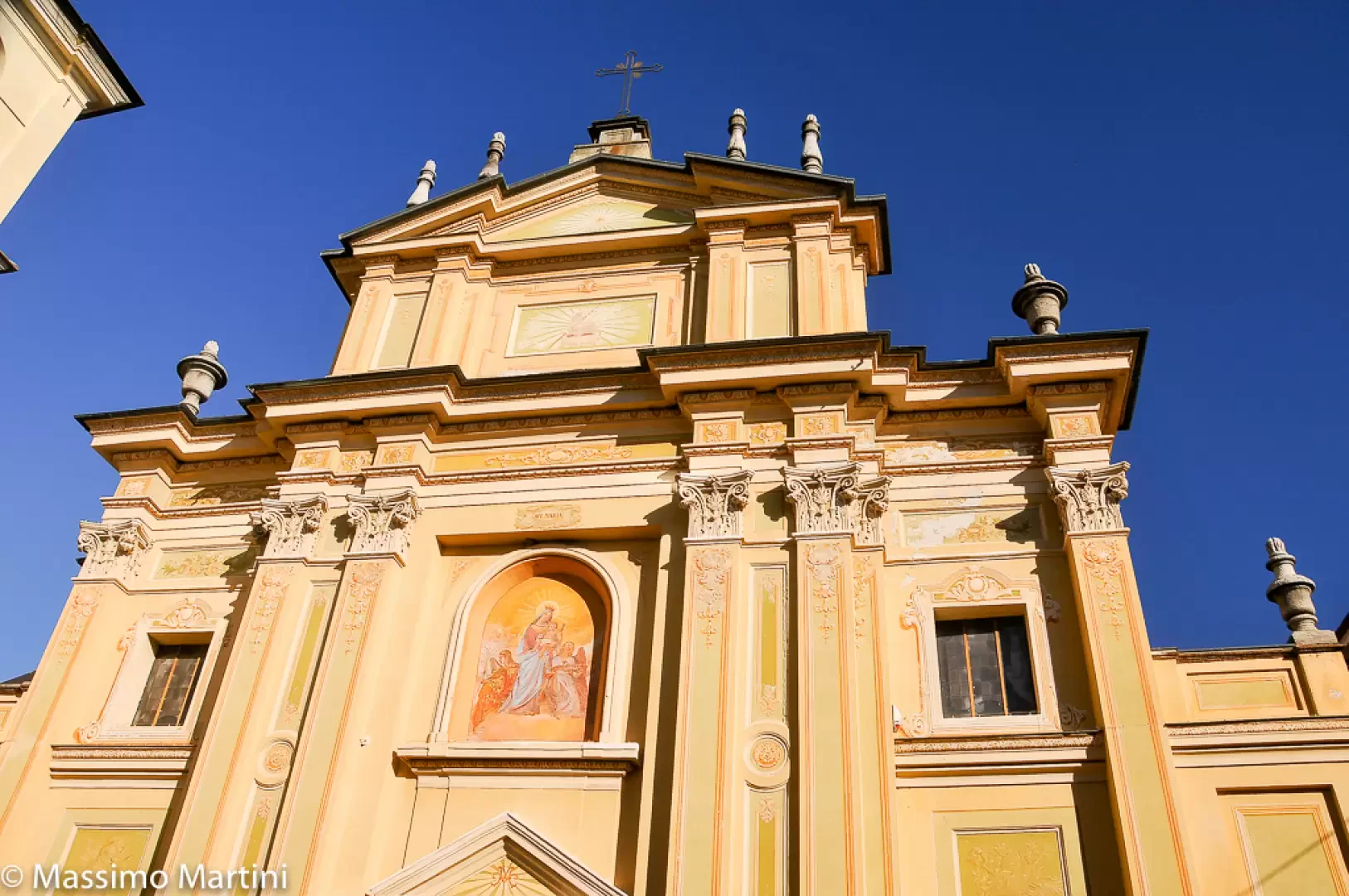Borgofranco d'Ivrea

Access
The municipality is easily accessible by car and public transport. It is located along the Strada Statale that connects Turin to Valle d'Aosta, about 7 km from Ivrea. The local railway station serves the Turin-Aosta line, while the motorway has the nearest exit at Quincinetto. The reference airport is Turin Caselle, about 60 km away. Borgofranco d'Ivrea therefore represents a territorial node between the plains and the mountains, where nature, history and community are harmoniously intertwined, preserving the living trace of medieval origins and ancient travel routes.
Introduction
Borgofranco d'Ivrea is a Piedmontese municipality located in the heart of the Ivrea morainic amphitheatre, in the north-western part of the Metropolitan City of Turin, at an altitude of 253 metres. The territory stretches between the Dora Baltea and the first pre-Alpine slopes of Mombarone, at the entrance to Valle d'Aosta, and includes hamlets such as San Germano and Ivozio. Landscape and climate reflect the transitional character between the plains and the mountains: vineyards, chestnut forests and moraine relief coexist with agricultural areas and settlements of ancient origin.
Description
The village was born towards the end of the 13th century as a fortified stronghold, commissioned by the Bishop of Ivrea and the Marquis of Monferrato to guard a disputed border area and protect transit along the Canavese Via Francigena. Its name, 'borgo franco' (free village), recalls the franchises and tax privileges granted to the new inhabitants to encourage its population. Between 1256 and 1277, walls and defensive towers were erected that are still partially visible, while subsequent extensions incorporated the villages of Bajo Dora (later merged in 1929) and Monbueno. A distinctive feature of the village is the medieval ricetto, one of the best-preserved in the Canavese area, with regular streets, porticoes and loggias in stone and brick, direct evidence of 13th and 14th century rural architecture.
The local economy has agricultural and craft roots, but today it is diversified. Alongside wine-growing and the cultivation of fruit and vegetables, small manufacturing enterprises and innovative sustainability-oriented realities, such as the ABCI company, active between technology and social inclusion, are emerging. Borgofranco has protected the link with its products through the De.C.O. mark, created to valorise traditional specialities such as canestrelli, crunchy wafers made of flour, butter and cocoa, whose origin dates back to the Middle Ages and whose fame has spread abroad. Also important are the activities linked to the 'Balmetti', natural cavities in the Quinto mountains exploited as wine cellars: places of sociability, wine culture and collective identity, known as 'the mountain that breathes' due to the phenomenon of moving air that regulates its temperature all year round.
Cultural life revolves around festivals and traditions that punctuate the local calendar: the celebration of San Maurizio, patron saint on 22 September, and numerous festivals dedicated to typical products and wine. The artistic heritage includes Romanesque churches scattered throughout the hamlets and historical palaces such as Palazzo Marini (17th century), built when the feud was assigned to Claudio Marini in 1623. The memory of the ancient trade routes survives in the routes of historical events and pilgrimages that cross the territory, once frequented by wayfarers on their way to Rome.
In terms of tourism, Borgofranco is the starting point for numerous nature and cultural itineraries. Hiking trails lead to the heights of Monte Cavallaria or to the moraine ridges of the Serra d'Ivrea, with panoramic views of the Alps and the Canavese plain. Other interesting excursion destinations include the Ivrea lakes and the Castellazzo, as well as the network of paths winding through forests and ancient mule tracks. The best seasons for hiking are spring and autumn, when the mild climate enhances the colour contrasts of the moraine landscape.
Information
Area: 13.42 sq. km
Altitude: 253m
Maximum elevation: 849m - border with the municipality of Andrate
Number of inhabitants: 3,621 as of 31.01.21
Name in dialect: Borghfranch in Piedmontese
Inhabitants name: Borgofranchesi
Patron Saint: St Maurice, celebrated on 22 September
Bordering municipalities: Andrate, Brosso, Chiaverano, Lessolo, Montalto Dora, Nomaglio, Quassolo, Settimo Vittone
Website: www.comune.borgofranco.to.it
Points-of-interest
- alpeggi - map
- bivouacs - map
- refuge - map
- villages - map
- protected areas - map
- colli - map
- geographs - map
- geositi - map
- lakes - map
- lakes - map
- cultural heritage - map
- lplaces-of-worship - map
Itineraries
- mountaineering - map
- climbing-sports - map
- ice-climbing - map
- hiking - map
- mountain-bike - map
- snowshoeing - map
- snowshoeing - map
- trail running - map
- trekking - map
- via ferrata - map